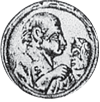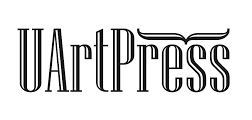A légzés funkciója a színészi munkában
Keywords:
breathingAbstract
The Function of Breathing in Acting
The study is an analysis focusing on acting breathing, based on A. P. Chekhov's Seagull, discussing the first sentence of the drama (Medvedev: Why do you always walk in black?) in relation to ten theatrical performances. I examine breathing primarily as a stage meaning carrier, comparing it to show the diversity of actors playing the role of Medvedenko, and I perform a microanalysis of what other common features beyond the described Chekhov sentence characterize the stage work of some actors from the aspect of the breathing applied. To analyse the air intake preceding the introductory sentence, I define the concept and function, physiology, and structure of respiration in the study, and then draw various conclusions focusing on the practice of stage respiration. The statement of the study: the acting work appearing in the performance is determined and influenced by the breathing operated at the moment of entering the stage. The intensity of the air intake, the phase shift between exhalation and inhalation, the retention of the air and the flow of the inhaled air all determine the person entering the stage, they affect his voice, his actions, his thoughts
References
BARBA, Eugenio, 2001, Papírkenu. Budapest: Kijárat.
COHEN, Robert, 1988, A színészmesterség alapjai. Pécs: Jelenkor.
FISCHER Sándor, 1955, Beszédtechnika. Budapest: Tudományos és Ismeretterjesztő Kiadó.
FISCHER Sándor, 1966, A beszéd művészete. Budapest: Gondolat.
FISCHER Sándor, 1975, Retorika. Budapest: Kossuth.
FISCHER-LICHTE, Erika, 2009, A performativitás esztétikája. Budapest: Balassi.
GROTOWSKY, Jerzy, 1999, Színház és rituálé. Budapest: Kalligram.
HATHÁZI András, 2013, Nullapont. Gondolatok színészről és annak neveléséről, Színház, https://szinhaz.net/2013/04/25/nullapont/ (utolsó letöltés: 2019. január 28.)
HEIDEGGER, Martin, 2006, Rejtekutak. Budapest: Osiris.
HODGE, Alison, 2010, Actor training. New York: Taylor & Francis e-Library.
JAKUBINYI György, 1997, Szentírás a Neovulgáta alapján. Budapest: Szent Jeromos Katolikus Bibliatársulat.
KISS Lajos, PAPP László és BENKŐ Lóránd, 1967, A magyar nyelv történeti-etimológiai szótára 2. Budapest: Akadémiai.
NÁNAY István, 1983, A színésznevelés breviáriuma. Budapest: Múzsák Közművelődési Kiadó.
PAVIS, Patrice, 1996, Előadáselemzés. Budapest: Balassi.
PAVIS, Patrice, 2006, Színházi szótár. Budapest: L’Harmattan.
Siráj, A. P. Csehov. 2003. Budapest: Fészek Művészklub [Schilling Árpád – rendező, Katona László – Medvegyenko]
Sirály, A. P. Csehov. 1972. Budapest: Madách Színház [Ádám Ottó – rendező, Dégi István – Medvegyenko]
Sirály, A. P. Csehov. 1975. Bukarest. [Petre Sava Baleanu – rendező, Dan Nasta – Medvegyenko]
Sirály, A. P. Csehov. 1996. Nyíregyháza: Móricz Zsigmond Színház [Verebes István – rendező, Keresztes Sándor – Medvegyenko]
Sirály, A. P. Csehov. 2002. Komárom: Komáromi Jókai Színház [Telihay Péter – rendező, Benkő Géza – Medvegyenko]
Sirály, A. P. Csehov. 2008. Budapest: Bárka Színház [Szász János – rendező, Kardos Róbert – Medvegyenko]
Sirály, A. P. Csehov. 2008. Sepsiszentgyörgy: Tamási Áron Színház [Kiss Csaba – rendező, Diószegi Attila – Medvegyenko]
Sirály, A. P. Csehov. 2013. Budapest: Nemzeti Színház [Alföldi Róbert – rendező, Fehér Tibor – Medvegyenko]
Sirály, A. P. Csehov. 2015. Marosvásárhely: Nemzeti Színház [Keresztes Attila – rendező, Henn János – Medvegyenko]
Sirály, A. P. Csehov. 2015. Szatmárnémeti: Északi Harag György Színház [Sorin Militaru – rendező, Gaál Gyula – Medvegyenko]
SZTANYISZLAVSZKIJ, Konsztantyin Szergejevics, 1988, A színész munkája. Budapest: Gondolat.
ZAICZ Gábor, 2006. Etimológiai szótár. Magyar szavak és toldalékok eredete. Budapest: Tinta.
Downloads
Published
How to Cite
Issue
Section
License

This work is licensed under a Creative Commons Attribution 4.0 International License.
CC-BY permits any use, reproduction, distribution, self-archiving and citation of the work as long as the authors are credited. The complete bibliographical data of Symbolon Journal must also be indicated, which you can find in the How to cite section on this page. If possible, please also place a link leading to the original publication.
Copyright of the paper belongs to the author(s).




